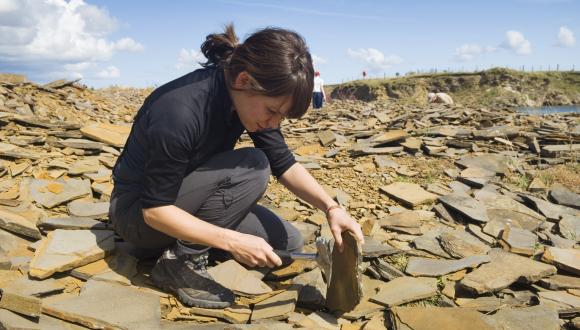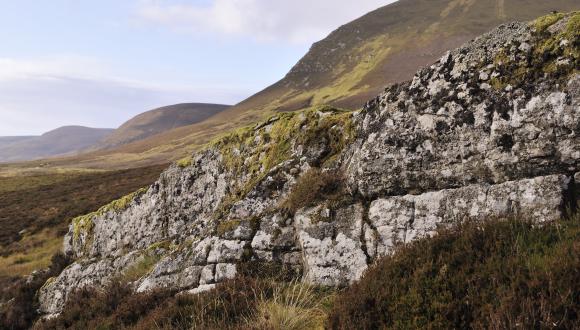
Geodiversity and natural resources
People’s use of Scotland’s varied non-renewable natural resources has a strong impact on economics and landscape.
People have exploited Scotland’s huge variety of geological materials for thousands of years. Wise use of these non-renewable resources is fundamental to sustainable development and a greener Scotland.
Geological resources are vital to economic development as a source of materials for new development, restoration of our built heritage, energy, minerals, soil and so on.
The location of these natural resources has been crucial in deciding where and how people have lived and worked in Scotland. Industry and settlements grew up around where these raw materials were found.
Using these natural resources has had, and continues to have, an impact on the landscape of Scotland. There are the obvious effects of quarrying, and spoil heaps are a legacy of mining.
Uses for raw materials
Fuel
For many centuries coal has been extracted for use as a fuel to heat homes and to power Scottish industry. Peat also continues to be used locally for fuel.
Mining oil-rich shale to extract oil produced the distinctive bings of West Lothian. Oil and gas continue to be extracted from the rocks of the North Sea.
Building materials
Rock types used as building stone include:
- basalt
- flagstone
- granite
- sandstone
- slate
Rock is also used for concrete manufacture for roads and building construction.
Clay has been quarried and mined in the past for the manufacture of bricks. Limestone continues to be quarried for use in making cement.
Minerals
Mineral mining in Scotland has yielded:
- barite
- chromium
- copper
- gold
- iron
- lead
- manganese
- mica
- silver
- talc
- zinc
Precious and semi-precious stones collected include:
- agates
- amethyst
- blue topaz
- Cairngorm crystal (smoky quartz)
- sapphire
Agriculture
Lime derived from limestone has been used to improve soil quality. Soil supports crops, forestry and natural habitats, and is an important factor in both water and air quality.





